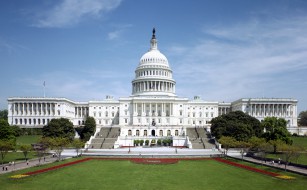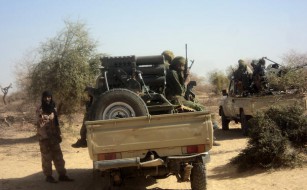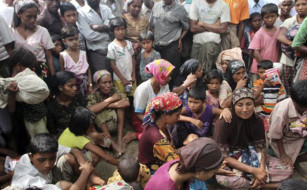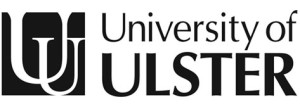Tuareg accuse France of promoting Libya’s latest post-NATO war
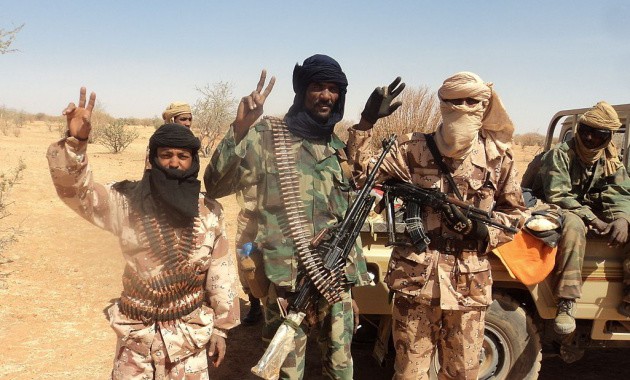
Vijay Prashad, author of Arab Spring, Libyan Winter (2012) and holder (2013-2014) of the Edward Said Chair at the American University in Beirut, recently described the situation in Libya as “precisely the consequence of the kind of war NATO waged [in Libya], destroying the infrastructure, collapsing the state, and allowing a bunch of different militia groups to be treated as heroes.”
While few Libyan analysts would disagree with that assessment, NATO’s culpability for what is happening in Libya goes far beyond Libya. As with the Bush-Blair invasion of Iraq, not one iota of thought was given by the US State Department, the UK’s Foreign and Commonwealth Office and whatever part of the French government was masquerading as a foreign office at the time, to the consequences of their intervention.
The catastrophic consequences of NATO’s Libyan intervention for Mali, and to slightly a lesser extent, Niger and Chad, are now moderately well documented, although questions are beginning to be asked about precisely what France’s 5,000 or so troops are actually doing in those countries. Indeed, so far, France’s military intervention across the Sahel – Mauritania, Mali, Niger and Chad – first as Operation Serval and then as Operation Barkhan, has coincided with the increased political instability of Mali, growing anti-French sentiment in Niger, the spread of jihadism across the entire region and the expansion of Boko Haram from Nigeria into both Niger and Chad.
France will no doubt say that these things are just coincidence and the reasons it has been obliged, as the post-colonial power, to send its armed forces to the region. But local people might be inclined to disagree. Indeed, as another new “post-NATO-intervention” war looks ominously like destroying over 120 years of peace in Libya’s remote desert regions, far from the eyes of western reporters, local Tuareg tribesmen are accusing France of furthering its own designs on Libya’s extreme south.
Tuareg–Tebu conflict
A dangerous situation is developing in Libya’s Fezzan. Since around September 2014, intermittent fighting between Tuareg and Tebu (Toubou) populations, mostly in the Sabha–Oubari (Sebha-Ubari) area of the Fezzan, has been on the rise. Since the middle of July (2015), the word “war” has been used increasingly to describe the intensification of this Tuareg-Tebu conflict.
The latest round of fighting between Tuareg and Tebu, which began in mid-July as another supposedly unforeseen consequence of NATO’s 2011 military intervention, is the most serious so far and, if not reconciled quickly, threatens to have far-reaching consequences.
Relations between Tuareg and Tebu, the Sahara’s two best-known nomadic peoples, are complex and date far back into pre-colonial times. While they are conventionally portrayed by ethnographers as traditional enemies, the Midi–Midi treaty between the Libyan Tuareg and Tebu – or Amidy Midi treaty, as some Tuareg call it – signed as long ago as 1893, has stood firm for over 120 years.
The Midi–Midi treaty ended nine years of war between the two peoples, during which time the Tebu had sought to appropriate the Tuareg territory of the Fezzan, the name given to Libya’s expansive southwest desert region, bordi.ng Algeria to the West and Niger to the south. That conflict, said by Tuareg notables to be about the theft of livestock, was, in fact, more about control over trans-Saharan caravan routes.
Today, Libyan Tuareg are accusing the Tebu of trying to get their hands on the Fezzan oil fields.
The geographical and historical background
In terms of the accepted Midi–Midi border between Tuareg and Tebu, which runs more or less north–south through Katrun (Gatroun), the Sharara and el Feel oil fields are within Tuareg traditional territory, being located near the predominantly Tuareg town of Oubari.
In terms of Midi-Midi, goods that came into Libya east of the San Salvador triangle (on the border with Niger) were in Tebu territory; goods that entered west of San Salvador were in Tuareg territory. South of the Libya-Niger border, the Tebu–Tuareg divide continued in a north–south line, running through the empty wastes of the Ténéré desert. The Djado plateau, Madama and the Kaouar oases to the east of the Ténéré were Tebu country; Aïr to the West of the Ténéré was Tuareg country. Life was relatively straightforward, at least on those matters.
During the colonial era, most Tebu lived in Chad, notably in the disputed Aozou strip of northern Chad. The number of Tebu in Libya at that time has been estimated at little more than 200 families, settled in the oases of Kufra, Tajarhi, and Katrun.
Before Libyan independence, France tried to annex the Libya’s Fezzan region to Algeria, but the main tribal powers of the Tuareg and Ulad/Ouled (Awlad) Suleiman (Slimane) remained loyal to Idris, chief of the Senussi order, who was given the Libyan throne in 1951 when the country achieved independence.
Few, if any, Tebu were involved, as they were small in number at that time and loyal to the chiefdom of Aozou in northern Chad. However, with Muammar Qadhafi’s seizure of the Aozou strip in 1973 and his army’s humiliating ejection from Chad in 1987, many Chadian Tebu moved to Libya.
They moved mostly to the oasis of Kufra in southeast Libya and the towns of Murzuq and Sabha. Sabha, with some 130,000 inhabitants is the capital of Fezzan. The result was that the de facto Tebu demographic zone in Libya expanded into an arc running from Al-Awaynat in the extreme southeast, through the Kufra oasis, northwest to Tazurbu, then west to Zawila, bordering Sabha and farther west from the original Midi–Midi frontier, passing through Katrun, to Murzuq but not including Oubari, which remained about 80% Tuareg and 20% Arab.
Even with this slight westward encroachment of Tebu towards Tuareg territory, especially around Murzuq, the basic peace agreement of Midi–Midi remained intact. Qadhafi gave most Tebu Libyan citizenship, as he did to most Tuareg, but it was for the most part a second-tier citizenship, with the result that the two tribes shared a common bond during the Qadhafi era of being effectively politically and socially marginalised.
The precise number of Tuareg and Tebu in Libya is not known. The most reliable estimates of Tuareg in Libya range around 70,000. The Tebu population is less certain. Officially, about 15,000 Tebu live in the country, but some estimates run to as high as 200,000. One press report in July 2015 offered the wildly excessive figure of 800,000. A more realistic report from the UK Home Office in February 2015 put the Libyan Tebu population in the “tens of thousands”.
After Qadhafi
After the fall of Qadhafi in 2011, the bonds between Tuareg and Tebu remained relatively strong. In July 2012, the two tribes held a joint celebration of the Midi–Midi treaty, while in March 2013 they stood together in a Tuareg–Tebu Forum under a banner of strengthening Libyan national cohesion. A month later, they stood together again in a protest to demand that the new Libyan constitution should be by consensus and not imposed by a majority.
Then, in September 2014, the wheels began to fall off. After a standoff between young Tuareg and Tebu was resolved, at least for a few hours, by a meeting of their elders, Tebu forces marched into the Tuareg stronghold of Oubari on 19 September.
The details and origin of the fighting that took place in and around Oubari last September, which has continued intermittently since then, are murky.
It is not as if the Libyan desert had been free of fighting since the fall of Qadhafi. However, most of the immediate post-Qadhafi fighting in Libya’s south had either been between Arab tribes or between the Tebu and Arab tribes, notably the Ulad (Awlad) Suleiman and other militias linked to the Arab Qadhadhfa, Warfalla, Hasawna, and Mahamid tribes. The Tuareg, further to the west in the regions of Oubari, Ghadames and Ghat had been little or completely uninvolved.
Most of the conflict centred on Sabha and was driven mostly by rivalry for political dominance in the post-Qadhafi era and access to economic resources.
The most serious fighting was in early 2014 when a conflict between the Ulad Suleiman and Qadhadhfa, which had been brewing since the last weeks of the Libyan uprising of 2011, resulted in several military bases in and around Sabha being attacked and captured.
Some Tebu, but no Tuareg, were also involved in this fighting, which resulted in about 100 deaths and ended only when brigades from Misrata and Zintan intervened. Further intermittent outbreaks of fighting in the area through much of 2014 was kept in check thanks to outside mediation.
A different kind of fight
The fighting that commenced between Tebu and Tuareg in Oubari in September 2014 was different for two reasons. First, it was the first significant breach of the Midi–Midi treaty in 120 years. Second, it bore characteristics suggesting that it was more than just an intertribal clash.
Almost from the outset, it was apparent that the Tebu attacking Oubari were drawing on militia forces from Murzuq, as well as some of the Sabha-based Libya Shield forces. Tuareg were quick to identify these external elements as ‘third forces,’ although their composition in the pea soup of Libya’s fast-changing militia forces was by no means clear.
Tension between the Tuareg and Tebu has worsened since the establishment of two rival governments in Libya in 2014. The eastern government, based in Tobruk, is led by Prime Minister Abdullah al-Thanni and recognised by most of the international community. It is backed by the forces of General Khalifa Haftar’s Operation Dignity.
The Tripoli government came into being in August 2014 after an umbrella coalition of forces – naming itself Operation Libya Dawn and led by the powerful Misrata militias and their Islamist-leaning allies – drove the forces of General Haftar and the Zintan militias from Tripoli’s international airport, took control of the capital, Tripoli, and forced the al-Thanni government to withdraw to the east.
The Misrata-led forces have since formed their own rival parliament and government in Tripoli, which has taken over some ministries and effectively controls parts of western and central Libya.
Since then, there have been repeated clashes between the Tuareg and Tebu communities. At the risk of oversimplifying, and with little hard evidence, it is widely believed that the Tebu have been receiving assistance from al-Thanni’s eastern-based government, while the Tuareg are said to have been receiving arms from the government in Tripoli.
The situation in Sabha
In mid-July 2015, serious fighting broke out between Tuareg and Tebu in Sabha. In the week prior to 22 July, at least 40 people were killed and hundreds of families were displaced. The Sabha authorities put the number of deaths in the first three weeks of July at 60.
Calls to the warring sides from the Tobruk government ‘to stop fighting and resolve their differences through dialogue’ were of questionable sincerity and fell largely on deaf ears.
And in Oubari
Although Sabha has seen the heaviest fighting over the last couple of years in terms of numbers killed, the target of much recent fighting is the predominantly Tuareg town of Oubari, close to the Sharara oil field. According to the Libya Body Count website, 11,280 people were displaced from Oubari between May and November 2014.
The number has risen considerably since then, with some reports saying that as much as 85% of the town’s estimated 40,000-strong civilian population has fled. The majority were Tuareg who fled mostly to Ghat, while the Tebu retreated mostly to Murzuq. The Libya Herald newspaper in November 2014 described Oubari as having been abandoned by most of its civilian population.
Serious clashes occurred in Oubari in March and again on 18 May 2015, when at least 20 people were reportedly killed and dozens more injured. Fighting continued over the next few days with an unreported number of additional deaths. This round of conflict was triggered by Tebu militia trying to fight their way past positions held by Tuareg forces in order to enter and take control of Oubari.
Further to the west, the road from Oubari to the town of Ghat, the only route into Libya’s extreme southwest from the rest of Libya, is effectively sealed by Tuareg gunmen, making Ghat, at least for the moment, a Tuareg safe-haven. Urgently required food supplies are now being brought into Ghat from across the Algerian border in a humanitarian operation being run out of the Algerian oasis town of Djanet by the Algerian authorities.
Mediation attempts
Following the upsurge of fighting in Sabha around 15–22 July, a French NGO, called Groupement Pro Médiation (GPM), tried to promote talks between Tebu and Tuareg representatives. Executive director Eric Blanchot reportedly arranged for two delegations of 11 from each side to be flown to Brussels to meet with two observers from Libya’s rival governments.
Delays in arranging the Tebu flight to el Beida and then on to Tunis led to suspicions on both sides that the Tobruk government was sabotaging the trip in order to ensure that fighting in the Fezzan continues. The Tuareg, for their part, were already suspicious that the French were siding with the Tebu.
Nevertheless, it seems that the delegations were able to meet in Oubari on or around 26 July and then finally in Brussels on 28–29 July. Thanks to the mediation of local Fezzan dignitaries from the Council of elders, a peace agreement of sorts was signed by the Tuareg and Tebu around 26 July.
A representative for the Council of Elders, Ayoub al-Sharaa, told the Libya News Agency that the agreement included a ceasefire, the opening of the main road and bridges into the embattled districts of Sabha, the evacuation of the injured and the elderly, and the return of all displaced persons on both sides. He stressed that the agreement was valid for one week, after which further details would be discussed to reach a final solution and return to peace.
A short-lived peace
The peace agreement appears to have been short-lived. Unverified reports from the region suggest that violence recommenced in Sabha after protests on 31 July and quickly spread to Oubari, where two boys were reportedly killed in fighting between Tebu and Tuareg.
A key feature of the attempted mediation was public criticism by the Council of Elders that the Libyan state was not only absent from such mediatory efforts but also had completely failed to resolve the crisis in the south. Of course, there is no such thing as a Libyan state at the moment, just two competing governments effectively in a state of civil war.
Fighting fuelled from outside
The point of the elders’ condemnation, however – and one that is being increasingly realised by the Tebu and Tuareg warring parties, especially the Tuareg – is that the fighting is being fuelled by outside interests, notably Libya’s competing governments and, as far as the Tuareg are concerned, the French.
Indeed, the latest fighting is at least having the effect of drawing attention to how the conflict in the south is basically a reflection of the division and conflict between the Tobruk and Tripoli governments.
Evidence is coming to light that the eastern government has been supporting and arming the Tebu, while the Tripoli government, along with the powerful Misratan forces, has been moving behind the Tuareg.
There are always two sides to a conflict, but the Tuareg are essentially correct in seeing the Tebu as the aggressors. The main object of Tebu aggression, at least as the Tuareg see it, is to secure control of the Sharara oil field, which had been guarded by a combination of Zintan and Tebu guards until it was closed in November 2014 by gunmen believed to have been associated with the Tripoli government.
Sharara is Libya’s second largest oil field and al-Thanni’s government in Tobruk, which effectively controls the National Oil Corporation (NOC), would like to secure control over it. The Tuareg thus see the Tebu militias as proxies for the eastern government in its attempt to expand its control of the oil sector into what is generally regarded as the Tripoli government’s sphere of influence.
Are the French promoting conflict?
The Tuareg also see the Tebu as proxies for the French. With French forces now spread across the Sahel in Mali, Niger, and Chad – and playing a major part in international deliberations on Libya – the Tuareg see the French as trying to expand what they still refer to as their colonial interests. The Tuareg see these interests as centering on the oil wealth of the Fezzan, and especially the Sharara oil field, in which the French oil company Total has a stake.
The French oil company has a 30% interest in contract areas 129/130 and a 24% interest in contract areas 130/131, blocks that are straddled by the giant Sharara field. Total also has a 100% interest in block NC191 in the nearby Murzuq basin.
The Sharara field, which is operated by Spain’s Repsol, had a capacity of 400,000 barrels per day (b/d) before the Libyan rebellion of 2011. In February 2012, the NOC announced that production had again reached 300,000 b/d. Since then, production has been intermitent as security issues have resulted in periodic closures.
Demonising the Tuareg
Although oil resources are driving the current fighting in the Fezzan, the pretext is terrorism. The Tuareg, in contrast to the Tebu, are being falsely portrayed in many quarters as sympathetic to, and even linked with, the jihadist and drug trafficking elements that have moved into southern Libya since the fall of the Qadhafi regime.
A number of Tuareg, along with individuals from almost every other ethnic group in the Sahara, have been associated in one way or another with the various jihadist and trafficking groups operating across the region. One such example is Mali’s Iyad Ag Ghali, a Tuareg who some analysts regard as a triple agent, serving the Algerian secret intelligence service, the DRS, as well as elements within both the French and Malian governments.
Yet the Tuareg as a whole, more than any other group or even government in the Saharan region, have been consistently and violently opposed to the encroachment of militant extremist Islamists into their traditional territories. Indeed, the failure of both the West and local governments to recognise this fact is a major reason why the region has been progressively overcome by jihadism.
In Libya, the main basis for the allegation of Tuareg involvement in jihadist violence concerns a certain terrorist group known as Ansar al-Haqq. For instance, in the sharp upturns of fighting in Oubari in March and May of this year, and now more recently in July, various news outlets claimed that Tebu forces aligned with the Libyan National Army (LNA) have been attacking a terrorist group known as Ansar al-Haqq.
Abdulrazaq al-Nazhuri, the Tobruk-appointed chief of staff of the LNA, told the media that the forces in Oubari, by which he meant the Tebu forces, were fighting against ‘terrorists.’ He was later forced to apologise to the Tuareg, even though he still seems to be insisting that the conflict in Oubari is taking place against terrorists.
Spinning a fiction
It is highly debatable whether there is any such group as Ansar al-Haqq. Several media outlets, sourcing their information to prominent Tebu figures and the Tobruk government, claim there is an extremist group in Oubari of this name, but it seems to have arisen in late 2013 when a small group of Oubari youths (no more than ten) called themselves Katiba al-Haqq.
This group had no religious or ideological orientation and no physical headquarters and is thought to have disbanded at the beginning of 2014.
There is, however, a militia group called Katiba 315, which was part of the Libyan Oil Facilities Guard. It participated in the 2011 revolution in support of democracy and is strongly opposed to jihadism. Some sources say the leader of this group is Ahmad Amr.
Somehow, Ahmad Amr’s name seems to have been transmuted to Ahmad al-Ansari, with Katiba 315, or another group, being called Katiba al-Haqq and further transmuted to Ansar al-Haqq.
The reality seems to be that both Sheikh Ahmad al-Ansari and Ansar al-Haqq are fictions perpetrated by the Tebu, backed by the Tobruk government, to justify their war against the Tuareg.
Supporting Qadhafi?
Libyan Tuareg are being demonised in other ways, being portrayed as supporters of Qadhafi. This is a simplistic and essentially false picture. Tuareg, like Tebu, were persecuted by Qadhafi, with the result that many Libyan Tuareg opposed him.
It is true that Qadhafi brought in many mercenaries from the Sahel, most of them Tuareg, and it is mainly these Tuareg, who have since left the country, who have given the Libyan Tuareg a bad name. With the Tebu and their Tobruk backers, along with less well-informed foreign journalists, promoting this false dichotomy between Tuareg and Tebu, the reputation is beginning to stick.
Petroleum politics
Mohammed Senoussi, a Tebu veteran who settled in the town of Murzuq when his family had to leave Oubari, was quoted in a Middle East Eye report on 16 July as saying, ‘The problem is the political agenda. The goal is to control the Tuareg city [of Oubari] and the oil field.’
The Tuareg Social Council issued a statement, reiterated on several occasions since, saying, ‘The Tebu groups attacking Oubari are attempting to take control of the city because of its proximity to important oil reserves. The assault on the Tuareg is an affront to all those who support dialogue and mutual respect as a solution to Libya’s on-going conflict. The Tuareg oppose terrorism and would be the first to fight terrorism if it were present in the south, in coordination with the appropriate local, national, and international security forces. No tribe or other group has the right to conduct military action in a residential area like Oubari under false pretences.’
French backing for the Tebu
Increasingly, the Tuareg community, both in Libya and farther afield, see France as playing a major role behind the scenes to drive the Tuareg from their traditional territory in Libya, which happens to include the Sharara and neighbouring el Feel oil fields.
The Tuareg juxtapose two facts. The first is that the Tuareg and Tebu lived in peace and harmony in Libya for over 120 years. The second is that the peace came to an end at almost exactly the same time as France expanded its military forces from Mali, in Operation Serval, across the Sahel of Niger and Chad and along Libya’s southern border, in Operation Barkhan.
On the media front, France is proving to be a powerful ally of the Tebu. In December 2014, French Defence Minister Jean-Yves Le Drian visited the new French military base at Madama, in northern Niger close to the Libyan border, where Tebu influence is strong. Some local people, mostly Tuareg, are beginning to refer to Madama as France’s Saharan Guantanamo.
In a widely reported televised speech, Le Drian, with arms outstretched towards Libya, told his audience of French troops and local Tebu, ‘That [southern Libya] is where you will find the chief jihadist, Belmokhtar [Mokhtar ben Mokhtar], as well as Iyad Ag Ghali, the leader of Ansar al-Din. The south of Libya has become a terrorist hub.’ Le Drian’s assertions regarding both Mokhtar ben Mokhtar and Iyad ag Ghali are unverified. Indeed, there is some evidence that Mokhtar ben Mokhtar, reported killed on at least 10 occasions, may have died as long ago as June 2012. But, when a Western Defence Minister speaks, who cares about the minor details? It is what the media reports that tends to stick.
If France, as the Tuareg claim, is promoting Tebu aggression in the Fezzan, there is little or no likelihood that the European Union or any other international body will do anything much to stop it, simply because France’s word on North African matters in European fora is more or less definitive.
France is the predominant postcolonial power in the region, has more knowledge of it than any other power, and has boots on the ground. With the US now taking more of a backseat, French opinion on the region is dangerously influential in the international community.
Moreover, if the balance of power between the Tobruk and Tripoli governments remains as it is, it is unlikely that the Tobruk government will withdraw its backing of the Tebu push across the Fezzan.
If that happens, Tripoli and Misratan forces are likely to move into the region in greater strength, and the chaos and violence of the north will simply be replicated in the south. Such a scenario is likely to see the Islamic State (IS) and other jihadist groups taking maximum advantage.
The onus rests very much on the international community, especially Brussels and the UN, to ensure that this new war is nipped in the bud. That means not being misled by French or any other external or third party interests.























